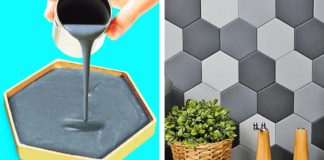
There is a commonly held belief that fabric softener will break down the fibers in your clothing over time. While this particular belief has been disproved, there are other issues with fabric softeners that you may want to know about.
How Fabric Softeners Work
Static electricity occurs when there is low humidity, when two surfaces of different material touch and then separate, and when both surfaces are made of insulating materials. Whether you recognized it or not, the previous sentence described the conditions found in a clothes dryer. Fabric softeners give clothing a chemical coating that stops their real surfaces from touching, thereby preventing static cling.
Beyond the static issue, most people will admit to using fabric softener to enhance the smell of their clothing.
Will it Ruin My Clothes?
It depends on your definition of “ruin”. Fabric softener will not break down the fibers in your clothes. However, the chemicals used in the softeners do build up over time. This buildup can cause yellowing in clothes and can reduce the absorbency of fabrics. The latter problem may explain why your old towels don’t soak up water like they used to.
What Chemicals, Exactly?
Here we get into the controversial aspects of that fragrant blue liquid and innocuous looking white sheet. There is science to back up the claim that fabric softeners are among the most toxic product designed for daily household use. Some ingredients are listed on the Environmental Protection Agency’s Hazardous Waste list. The list of chemicals in fabric softeners also includes some rather alarming potential side effects: some substances are carcinogenic (cancer-causing) and some can cause disorders of the central nervous system. Other ingredients can cause headaches, respiratory problems and skin irritation.
Should I Keep Using the Stuff?
That is entirely up to you. If you are concerned, you can minimize your use of fabric softener. Most manufacturers recommend amounts that are far in excess of what is needed.
Frugal living expert Pat Veretto suggests that you cut dryer sheets into fourths and then use each twice. You will use much less fabric softener and still reduce static cling. She also suggests that you dilute liquid softener with water. Instead of using it in the washing machine dispenser, spray it inside your dryer or soak up a small amount of softener with a rag and use it as a homemade dryer sheet. You can re-use that rag several times simply by dampening it – no new fabric softener required.
If you think you want to give up fabric softener, there are other options for eliminating static cling. Toss a wet towel into the dryer a few minutes before the end of the cycle. Use a ball of aluminum foil in the dryer. Add ½ cup of white vinegar, baking soda or Borax to the rinse cycle of your washer to soften the water and reduce static cling. To make it really easy, add white vinegar in place of fabric softener in the fabric softener dispenser of your washer. Before trying this myself I was guaranteed that my clothes would not end up smelling like a chip wagon. Thus assured, I added vinegar to a load of laundry and can happily say that not only was there no static cling, there was also no odor.
































![DIY Dream Closet Makeover on a Budget!!! [Part 1] | Home With Stefani](https://www.vanesecret.com/wp-content/uploads/2020/11/maxresdefault-78-100x70.jpg)






